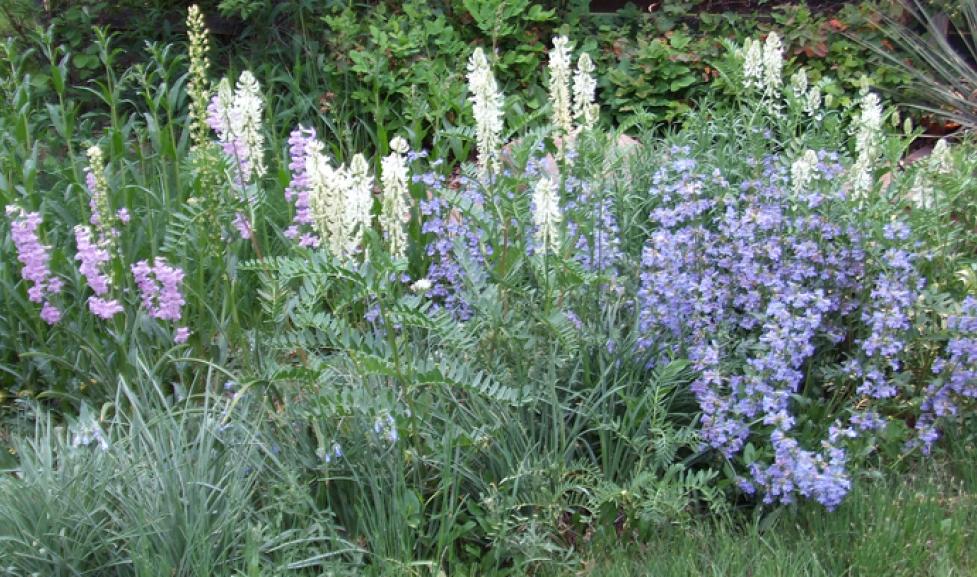There are over 700 species of trees, shrubs, flowers, grasses and ferns on Open Space and Mountain Parks (OSMP). Many of the plants migrated to the area when the climate was quite different; others have evolved in this area, and some have been either accidentally or purposefully introduced by people since 1858. This has resulted in a tremendously diverse spectrum of plant species, including those common to the Great Plains tallgrass prairies as well as the Southern Rocky Mountains. Such Ice Age relicts as paper birch trees and Black Snakeroot can be found on OSMP, as well as a number of critical plant species of special concern.
BE CAREFUL! Poison Ivy grows in many places throughout Open Space and Mountain Parks, especially in moist drainages. Watch out for three shiny leaves.
Learn more about the City of Boulder's Pollinator Programs.
What's a Native Plant?
Native plant - a plant species "that occurs naturally in a particular region, state, ecosystem, and habitat without direct or indirect human actions" (Federal Native Plant Conservation Committee, 1994). To clarify whether or not a plant species naturally occurs in Colorado, refer to Catalog of Colorado Flora by William A. Weber and Ronald C. Wittmann.
Where can I buy these plants?
Digging up wild plants is a NO-NO
We don't recommend transplanting vegetation from the wild and it may be illegal! All plants, including seeds and rootstocks, are protected on OSMP land and may not be collected.
BEWARE!
Many plant nurseries around Boulder, and some vendors at the Boulder Farmers' Market stock Colorado natives but be careful! There are many non-native look-alikes for sale, often with similar names. To be certain you are really buying a native and not a potentially noxious masquerader, please visit the Colorado Native Plant Society's Gardening with Native Plants page for lists of "Low Water Native Plants by Region". Colorado Native Plant Society also publishes a list of noxious plants to avoid in landscaping under the "Please Don't Plant These!" section. Also beware of so-called "wildflower seed mixes," which often contain non-native pests.
The nursery trade uses the plant's full scientific, or Latin, name to be sure they are supplying you with the proper species. Carry your list of recommended plants with you when you shop, and verify those Latin names before you buy! For more information on specific look-alikes to avoid, see our Native Garden Growing Tips.
Boulder Area Suppliers
These suppliers were found to carry at least 10 species on the Colorado Native Plant Society's list.
Resource Central Grass to Gardens program.
Harlequin's Gardens Extensive selection of Boulder native shrubs, wildflowers, ground covers.
Stuartz and Copeland Some native wildflowers and shrubs.
